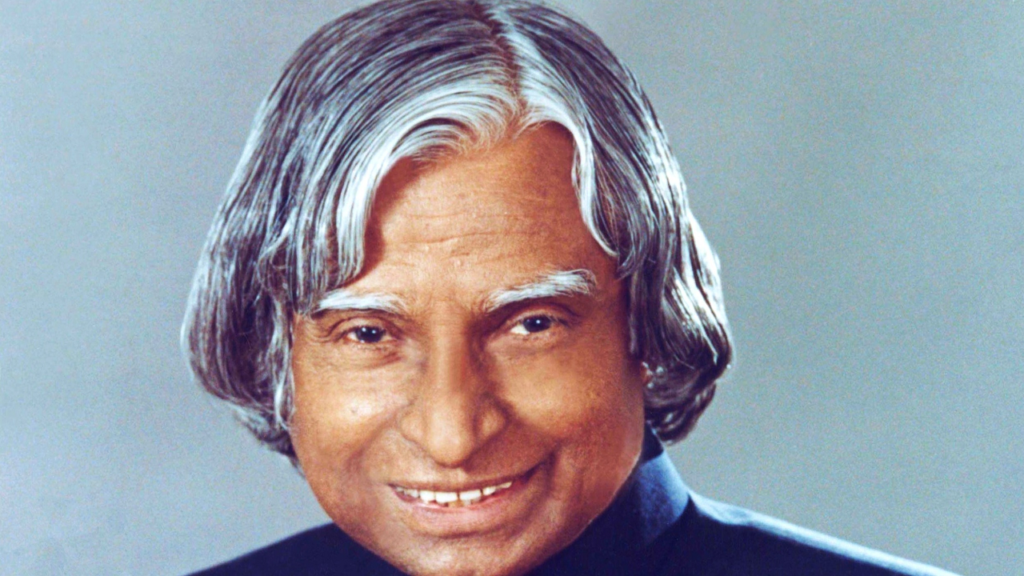APJ Abdul Kalam was an Indian scientist who served as the President of India from 2002 to 2007. He was born in a Tamil Muslim family in Rameswaram, Tamil Nadu, and studied physics and aerospace engineering. He worked as a scientist for the Indian Space Research Organisation (ISRO) and DRDO before becoming the President of India.

During his tenure as President, he was credited with many achievements, including increasing the GDP growth rate, launching the Pradhan Mantri Gram Sadak Yojana, and signing the Indo-US nuclear deal. He was also widely respected for his simplicity and integrity. After his death in 2015, he was hailed as a national hero and his birthday is celebrated as National Youth Day in India.
APJ Abdul Kalam Biography
Apj abdul kalam was an indian scientist who served as the president of india from 2002 to 2007. he was born in a tamil muslim family in rameswaram, tamil nadu, and studied physics and aerospace engineering. he worked as a scientist for the indian space research organisation (isro) and was responsible for the development of the country’s first indigenous satellite launch vehicle and SLV-3.
Kalam later became the scientific adviser to the prime minister and secretary of the department of defense research and development in the rank of cabinet minister. he is also credited with the development of several missiles, including Agni and Trishul. he authored several books, including his autobiography Wings of Fire.
Kalam was awarded the bharat ratna, India’s highest civilian honour, in 1997. he died on 27 july 2015 after suffering a cardiac arrest while delivering a lecture at the indian institute of management shillong.
Early Life and Education
Dr. A.P.J. Abdul Kalam was born on October 15, 1931, in the Hindu pilgrimage town of Rameswaram on Pamban Island, Tamil Nadu state, India. His father, Jainulabdeen, was a boat owner and imam of a local mosque; his mother, Ashiya Dissanayake Mudiyanselage was a housewife. One of his brothers owned a ferry that took Hindu pilgrims back and forth between Rameswaram and the now uninhabited Dhanushkodi. Kalam’s father taught him to build and sail the small wooden boats used to ferry pilgrims.

Kalam was educated in nearby Ramanathapuram District schools and enrolled at Saint Joseph’s College in Tiruchirappalli in 1954 to study physics and mathematics under Catholic priests who encouraged him despite his family’s poverty. He graduated with an average grade in 1957; despite his grades he won the President of India Gold Medal for being first in his class. After completing his degree he moved to Madras Institute of Technology where he studied aerospace engineering
Scientific Career
After graduating from the Madras Institute of Technology in 1960, Kalam started his career as a scientist at the Defence Research and Development Organisation (DRDO) where he designed a small satellite launcher vehicle that could be used to launch a small satellite. He also worked on an indigenoussonar navigation system and developed a prototype for the first indigenoussatellite launch vehicle (SLV-III).
Kalam was transferred to Indian Space Research Organisation (ISRO) in 1969 where he was responsible for the development ofIndia’s first indigenously built satellite launch vehicle, SLV-III. The project eventually led to the development of the Polar Satellite Launch Vehicle (PSLV), which is now used tolaunch all of India’s satellites.
Kalam served as the Director of ISRO’s Satellite Centre (now known as Vikram Sarabhai Space Centre) from 1971 to 1972 and then as the Project Director of SLV-III from 1972 to 1977. He subsequently became the Chief Scientist at DRDO from 1982 to 1985. In 1992, he was appointed as Secretary of Defence Research and Development organisation following which he was promoted to Chairman of DRDO and Secretary of Department of Defence Production in 1999.
Missile Development Program
Kalam started his career as a scientist at the Defence Research and Development Organisation (DRDO) in 1958. He later moved to the Indian Space Research Organisation (ISRO) where he was responsible for the development of India’s first satellite launch vehicle, the SLV-3. Kalam played a pivotal role in the development of the Polar Satellite Launch Vehicle (PSLV) and in India’s nuclear tests in 1974 and 1998.

In 1963, Kalam received the DRDO Award for Outstanding Contribution to Missile Development Program. In addition, he was honoured with the Bharat Ratna, India’s highest civilian award, in 1997.
Kalam continued to work on missile development programs even after becoming President of India. In 2006, he inaugurated the Integrated Guided Missile Development Programme (IGMDP). The program aimed to develop a range of missiles with different capabilities such as surface-to-air missiles, anti-tank missiles and anti-ship missiles.
Kalam also worked on developing indigenous missile defence systems. In 2009, he inaugurated the Advanced Air Defence (AAD) interceptor missile program. The AAD missile is designed to intercept incoming ballistic missiles at high altitudes.
Kalam’s efforts in missile development helped make India a major player in the global arms market. India is now one of the world’s leading suppliers of ballistic missiles and other military hardware.
Presidency
APJ Abdul Kalam was an Indian scientist and politician who served as the 11th President of India from 2002 to 2007. A renowned space scientist, Kalam made significant contributions to the Indian Space Research Organisation (ISRO) and is credited with the development of several missile systems, including the Agni and Prithvi missiles. He also played a pivotal role in India’s Pokhran-II nuclear tests in 1998, which resulted in the country becoming a nuclear power.
Kalam was born into a poor Tamil Muslim family in Rameswaram, Tamil Nadu. He studied physics and aerospace engineering, and was later appointed as a scientist at DRDO by Vikram Sarabhai. He rose through the ranks of DRDO and ISRO, eventually becoming the Project Director of India’s first Satellite Launch Vehicle (SLV-III), which successfully placed the Rohini satellite into orbit in 1980.
In addition to his scientific work, Kalam was also deeply involved in politics and public service. He was elected as a member of Parliament from 2004 to 2006, and served as Chairman of the Rajya Sabha Science & Technology Committee during this time. He was also active in promoting science education, and helped establish the Indian Institute of Space Science and Technology (IIST) in Thiruvananthapuram.
Kalam passed away on 27 July 2015 after suffering a cardiac arrest while delivering a lecture at IIM Shillong. He was posthumously awarded India’s
Later Life and Death
After a successful career in the Indian Air Force and Indian Space Research Organisation, Kalam became the eleventh President of India, serving from 2002 to 2007. He was nicknamed the “People’s President” and was known for his down-to-earth manner and simple lifestyle. He died on 27 July 2015 after suffering a cardiac arrest while giving a lecture at the Indian Institute of Management Shillong.
Kalam was born on 15 October 1931 in Rameswaram, Tamil Nadu, to a Tamil Muslim family. His father Jainulabdeen was a boat owner who had neither formal education nor wealth; his mother Ashiamma was a housewife. Kalam’s parents worked hard to support their family and instilled in him the importance of self-reliance and determination. As a boy, he sold newspapers to supplement his family’s income. He spent his free time reading books and playing sports.
He graduated from St Joseph’s College, Tiruchirappalli in 1954 with an average marks of 65%. He then moved to Madras (now Chennai) to study aerospace engineering at the Madras Institute of Technology. After graduating in 1960, he joined the Indian Defence Service Corps of the Indian Air Force but quit after eight months as he felt that it “wasn’t meant for him”. He then joined Vikram Sarabhai’s space organisation called ISRO where he worked on successfully launching India’s first satellite, Aryabhata, in 1975.
Awards and Honors
APJ Abdul Kalam was a renowned scientist and president of India who made great contributions to the country. He was honored with many awards and honors during his lifetime, including the Bharat Ratna, which is the highest civilian award in India.Kalam was also awarded honorary doctorates by 30 universities.
APJ Abdul Kalam Biography Conclusion
In this article, we will briefly discuss the life and accomplishments of Dr. APJ Abdul Kalam.
Born in 1931 in Tamil Nadu, India, Dr. APJ Abdul Kalam rose from humble beginnings to become one of the most respected scientists in India. After completing his schooling, he studied physics and mathematics at the University of Madras and went on to earn a degree in aerospace engineering from the Indian Institute of Technology (IIT) in Kanpur.
Dr. Kalam began his career as a scientist with the Defense Research and Development Laboratory (DRDL) in Hyderabad, where he worked on developing ballistic missiles. He later served as the scientific advisor to the Indian government and was responsible for developing India’s nuclear weapons program. In 1998, he was elected as the 11th President of India, becoming the first scientist to hold that office.
During his tenure as President, Dr. Kalam was widely respected for his intellect and integrity. He was also known for his efforts to promote scientific research and development in India. He helped establish several institutions dedicated to supporting young scientists and engineers, including the Indian Space Research Organisation (ISRO) and the Defense Research and Development Organization (DRDO).
After leaving office, Dr. Kalam remained active in public life, working tirelessly to improve education and encourage young people to pursue careers in science and technology. He also continued to promote peace and understanding between India and Pakistan through his work with the Pugwash
- Also Read: Who is Entrepreneur Bhavna Suresh
- Also Read: What is Shark Tank India
- Also Read: Part Time Business Ideas

